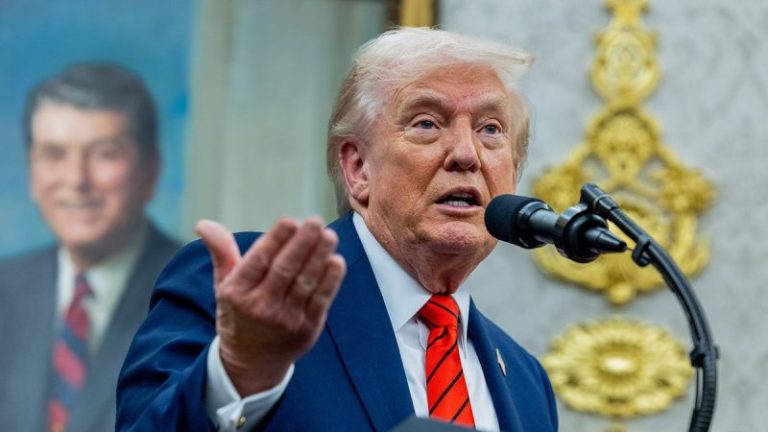Perth, Australia (ABN Newswire) – Locksley Resources Ltd (ASX:LKY,OTC:LKYRF) (FRA:X5L) (OTCMKTS:LKYRF) announces a major advancement at its Mojave Project in California. Recent structural mapping has dramatically expanded the target mineralised corridor at the Desert Antimony Mine (DAM) Prospect and identified a parallel structural target, enhancing the potential for a larger mineralised system across multiple mineralised zones. This expanded target has the potential to strengthen Mojave’s position as a strategic U.S. critical minerals hub, aligned with accelerating domestic supply-chain initiatives.
Highlights
– Structural mapping expands target mineralised corridor at Desert Antimony Mine (DAM) fourfold to 1.2 km, dramatically increasing the exploration target footprint and scale potential
– New parallel structural target zone identified 150m west of the main DAM structure, indicating the potential for a multi-zone system
– Updated 3D geological model defines seven priority follow up surface sampling targets, supporting imminent exploration targeting and JORC Exploration Target work
– Regional mapping identifies lamprophyre dykes, highlighting potential for additional critical mineral occurrences including carbonatites
– Mojave emerging as a district-scale critical minerals hub, strategically aligned with accelerating U.S. onshoring policies
– Third phase structural mapping program to commence late November to continue building geological understanding of the project and identify new targets
– High-grade silver assays up to 216 g/t Ag returned from Hendricks Prospect, alongside anomalous Zn, Pb, and Cu, indicating a broader polymetallic system
The structural geology mapping completed in late August/September 2025 at the Mojave Project has expanded the strike extent of the target structure at the Desert Antimony Mine (DAM) Prospect from 0.3 km to 1.2 km, representing a ~400% increase and highlighting the potential of the system. Mapping confirmed the continuity of the NNE-striking structural zone that hosts high-grade stibnite mineralisation at DAM, and identified a second, parallel shear zone, approximately 150 m to the west, exhibiting similar alteration and structural characteristics.
The updated geological interpretation also highlights steep north-plunging intersections between the mapped shear zones and folded host rocks as possible mineralisation plunge controls. Collectively, these findings have been incorporated into a new 3D geological model, which has defined seven priority surface sampling targets to guide the next phase of exploration and support the development of a JORC Exploration Target to guide future drilling programs.
The scale and geometry of these target zones align with the type of high-grade, clean stibnite feedstock required to fast-track U.S. antimony supply chains under programs such as DPA Title III and DOE ARPA-E. The program, undertaken by a specialist structural geologist, delivered five key outcomes:
– Significant expansion of geological mapping to the northeast and southwest of the DAM Prospect, extending the target horizon to 1.2 km of strike and materially increasing the scale potential of the mineralised system.
– Completion of new geological maps for the Hendricks Prospect (2.5km south east of DAM) and the Junipero Prospect (1.1km north of the Mountain Pass Mine).
– Identification of multiple lamprophyre dykes across all areas mapped suggest the presence of deepseated mantle tapping structures.
– Updated 3D geological models across the claim package, providing enhanced structural understanding and supporting refined exploration targeting
– Definition of 18 priority target areas for follow-up detailed mapping and intensive sampling programs to further assess mineralisation potential (to commence in October).
Desert Antimony Mine (DAM)
Mapping at DAM focussed on extending to the NE and SW from the previous mapping campaign, resulting in a comprehensive geological map now covering ~1.8km of strike and the development of an updated 3D geological model (Figure 1*). This work has significantly enhanced the understanding of the structural framework and potential controls to mineralisation. Key highlights from mapping and modelling in this area include:
– Confirmation of continuity of the structural zone (which is host to the mineralisation at DAM) for approximately 400m NNE from the existing adits.
– Identification of a second parallel structural zone located approximately 150m west of the main mineralised trend, exhibiting a comparable alteration signature and kinematics to that seen at DAM.
– Extension of the target mineralisation corridor to ~1.2km (previously ~0.3km) representing a ~400% increase in strike length.
– Improved understanding of mineralisation controls, particularly the role of steep north plunging intersections between mapped shears and folded host rocks.
– Definition of seven priority areas for detailed follow up sampling and mapping to refine exploration targeting.
– Enhanced structural interpretation, revealing clear associations between E-W trending stratigraphy and regional fold hinges and NNE striking shear zones, critical for targeting additional mineralised zones.
– Completion of an updated 3D solid geology model, providing a robust foundation for refined drill planning, target prioritisation and the potential definition of a JORC Exploration Target (Figure 1*).
Hendricks Prospect
First pass mapping was undertaken at the Hendricks Prospect (Figure 1*). The area was selected as a priority target area for mapping due to rock chips previously collected by Locksley being elevated in REE.
A significant finding from the mapping was the identification of a substantial shaft and associated workings not previously known by the Company. Initial grab sampling has returned high-grade silver assays of 216g/t Ag with anomalous lead (0.3% Pb), Zinc (0.9%Zn) and Copper (0.1%).
Highlights from mapping and modelling in this area include:
– The overall structural architecture across the Hendricks prospect area shares many similarities with that surrounding the Desert Antimony Mine (DAM).
– Presence of multiple NNE striking shears throughout the mapping area which mirror the orientation of the mineralisation seen at DAM, demonstrating a regional structural consistency and potential for additional zones of mineralisation.
– Highly weathered and altered ENE to ESE striking shear zones with potential to host mineralisation
– Elevated scintillometer readings acquired from on syenogranite dykes, indicating potential for REE mineralisation.
– Multiple prospecting pits/costeans throughout the area proximal to the Hendricks Shaft targeting discrete NNE striking shear zones.
– Definition of 11 priority areas for detailed follow up sampling and mapping.
– A 3D solid geology model of Hendricks Prospect is underway and will be used for 3D target generation and drill program planning.
Mapping completed at the Hendricks Prospect Area has confirmed that target zones of interest continue to the south and will form part of the priority follow up mapping scheduled for late November 2025.
Junipero Prospect
First pass mapping was completed at the Junipero Prospect located just 1.1km north of the Mountain Pass Mine pit crest. The area was targeted due to a gravity high anomaly, the proximity to Mountain Pass and the potential for carbonatites to be found in the area. Highlights from mapping and modelling in this area include:
– Identification of multiple E-W trending lamprophyre dykes across the mapping area indicating deep seated mantle tapping structures highlighting the potential for REE hosting carbonatites throughout the area which could exploit the same pathways.
– Abundant felsic rocks (Tonalites, Syenogranites) providing potential sources of REE when assimilated with carbonatite magmas from the mantle.
– Collection of samples for multielement analysis and whole rock classification.
– A 3D solid geology model of Junipero Prospect has been completed and forms part of the DAM 3D geological model (Figure 1*) and will be used for ongoing 3D target generation and future activity.
Locksley Resources CEO Kerrie Matthews commented:
‘Our second structural mapping program at the Mojave Project has markedly advanced our geological understanding and confirmed the substantial exploration potential of this critical district. The fourfold expansion of the Desert Antimony Mine (DAM) target horizon has fundamentally changed the scale of the opportunity, demonstrating the potential for a much larger mineralised system. This success, coupled with high-grade silver confirmed at Hendricks and the identification of multiple regional shear zones, has effectively lit up the entire Mojave Project for polymetallic vein discoveries. These outstanding results strongly validate our rapid exploration and development strategy, aligning perfectly with the accelerating U.S. government focus on securing domestic critical mineral supply chains.’
*To view tables and figures, please visit:
https://abnnewswire.net/lnk/7WY0FHM0
About Locksley Resources Limited:
Locksley Resources Limited (ASX:LKY,OTC:LKYRF) (FRA:X5L) (OTCMKTS:LKYRF) is an ASX listed explorer focused on critical minerals in the United States of America. The Company is actively advancing exploration across two key assets: the Mojave Project in California, targeting rare earth elements (REEs) and antimony. Locksley Resources aims to generate shareholder value through strategic exploration, discovery and development in this highly prospective mineral region.
Mojave Project
Located in the Mojave Desert, California, the Mojave Project comprises over 250 claims across two contiguous prospect areas, namely, the North Block/Northeast Block and the El Campo Prospect. The North Block directly abuts claims held by MP Materials, while El Campo lies along strike of the Mountain Pass Mine and is enveloped by MP Materials’ claims, highlighting the strong geological continuity and exploration potential of the project area.
In addition to rare earths, the Mojave Project hosts the historic ‘Desert Antimony Mine’, which last operated in 1937. Despite the United States currently having no domestic antimony production, demand for the metal remains high due to its essential role in defense systems, semiconductors, and metal alloys. With significant surface sample results, the Desert Mine prospect represents one of the highest-grade known antimony occurrences in the U.S.
Locksley’s North American position is further strengthened by rising geopolitical urgency to diversify supply chains away from China, the global leader in both REE & antimony production. With its maiden drilling program planned, the Mojave Project is uniquely positioned to align with U.S. strategic objectives around critical mineral independence and economic security.
Tottenham Project
Locksley’s Australian portfolio comprises the advanced Tottenham Copper-Gold Project in New South Wales, focused on VMS-style mineralisation
Source:
Locksley Resources Limited
Contact:
Locksley Resources Limited
T: +61 8 9481 0389
E: info@locksleyresources.com.au










